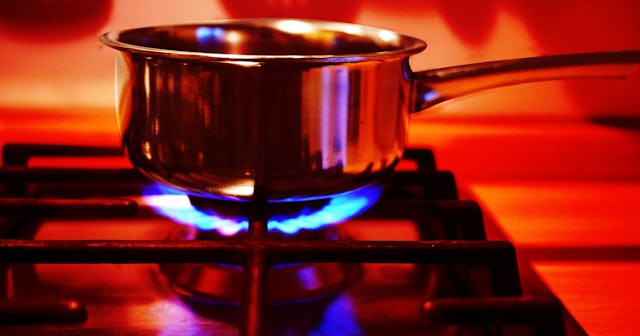From A Pediatrician: The Fuel You Cook With May Be Harming Your Kids’ Health

Being a parent means being constantly on the lookout for things that put our kids in harm’s way. When I became a mom, I started seeing danger around every corner – a busy street, a stranger, or even the chemical cleaners we all keep under the kitchen sink. And I would do anything to protect my kids from those dangers.
As a pediatrician and environmental scientist, I’m all too aware that many of us are actually unknowingly putting our kids at risk every time we turn the stove on to make dinner, crank up the thermostat in wintertime, or put in a load of laundry.
That’s because the natural gas that powers and heats many of our homes pumps a toxic stew of chemical pollutants – including carbon monoxide, nitrogen oxides, formaldehyde, and fine particulate matter – into the air in our homes and into our children’s lungs.
The more we learn about what gas is doing inside our homes, the worse it gets. We now know that children who grow up in homes with gas stoves are 42% more likely to develop asthma symptoms. And it’s especially dangerous for kids whose families live in smaller spaces, like apartments, that have less ventilation.
For years, coal-fired power plants dominated the U.S. energy mix, and as such, were responsible for the largest share of pollutants in the air and the greatest danger to public health. But recently, coal has been increasingly displaced by gas, which we were told was cleaner and healthier.
Gas, it turns out, is just bad in different ways. Gas now emits more carbon pollution than coal in the United States and is now the biggest driver of carbon pollution worldwide, threatening to erase all the emissions reduction progress we’ve made toward the goals of the Paris Climate Agreement. From wellhead to the home, U.S.-produced gas is extremely dirty, poisoning the air and ground where it is drilled or fracked and leaking methane – a greenhouse gas that is about 84 times as powerful as carbon dioxide over the first 20 years – from the pipelines, trains, and trucks that transport it.
Javier Zayas Photography/Getty
(And that’s putting aside gas’ habit of causing explosions that destroy homes and businesses, and other significant accidents that occur about once every three days from pipeline malfunctions across the U.S.)
New research, published this week by Harvard University T.H. Chan School of Public Health and the Rocky Mountain Institute, tells a frightening tale. In 19 states and D.C., pollution from burning gas to generate energy and heat homes and businesses caused more deaths than coal in 2017. Overall, fossil fuel air pollution is responsible for almost a fifth of premature deaths globally, including about 350,000 in the U.S. alone in 2018, according to a separate study published by Harvard in February.
Fortunately, there’s a clear pathway out of danger. First, families who can afford it should move toward replacing their gas stoves with electric or induction. More importantly, policymakers from the city-level all the way up to the federal government must encourage the transition away from dependence on gas power, putting policies in place that require new construction to be built all-electric and making it easier for home- and business- owners to retrofit existing buildings. Low-income households and African American and Hispanic children are disproportionately exposed to higher levels of indoor air pollution: In households that cannot afford to make the switch, we need better funding from the government to help families better protect their health by switching to electric appliances.
A new study found we could get to 80% clean grid by 2030 (and 90% by 2035) without raising customer costs from today’s levels even if we rapidly electrify buildings and transportation, and that doing so will avoid more than $1 trillion in public health costs while stimulating $1.5 trillion in investments.
Gas puts our families at a level of risk we would never accept in other parts of our lives. We are so careful to pay attention to the safety ratings of all the things we expose our children to, from furniture to toys. Why don’t we take the same care when it comes to the air our children breathe in our homes?